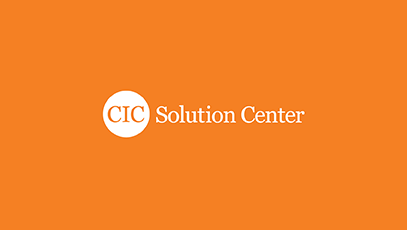CIC’s membership includes more than 700 nonprofit independent colleges and universities, state-based councils of independent colleges, and other higher education affiliates. Members represent a variety of locations, missions, programs, resources, sizes and interests.
Information on this page is updated as of June 30, 2025, and included in the 2024–2025 CIC Annual Report.
Overall Membership
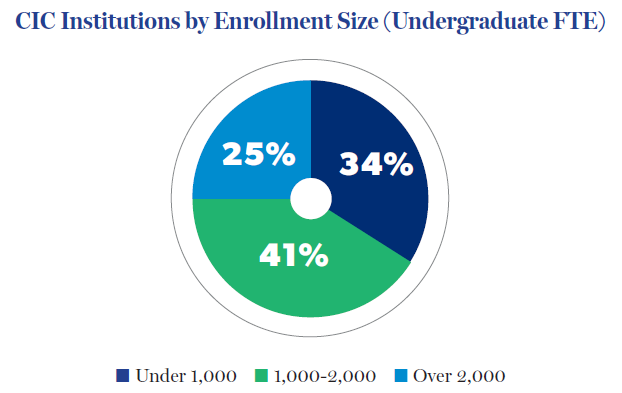
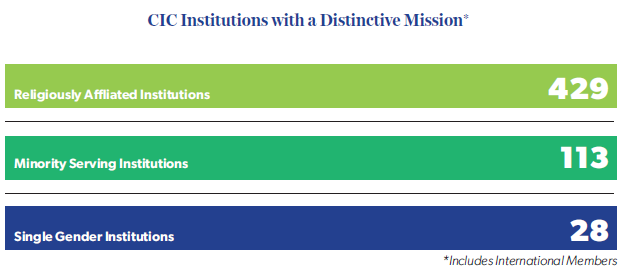
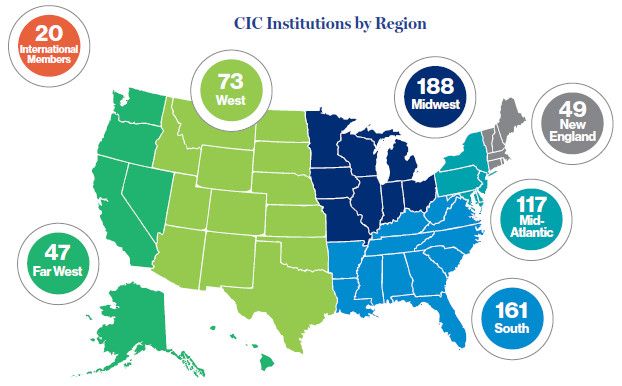
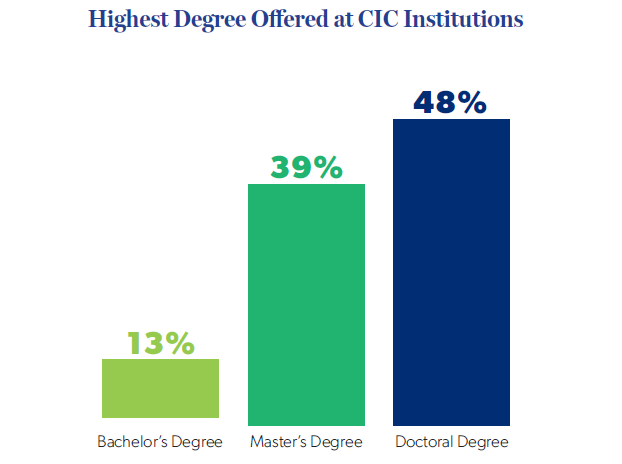

Carnegie Classifications
In 2025, new Carnegie Classifications were released. CIC members are represented across the institutional classifications and demonstrate strong outcomes in the new student access and earnings “opportunity” classification.
2025 Carnegie Institutional Classification of CIC Members
Thirty-one new Carnegie Institutional Classifications built on a new framework were released in Spring 2025. Institutional Classification is descriptive and consists of three dimensions: award level focus, academic program mix, and size.
| Mixed: Baccalaureate | 45 |
| Mixed: Undergraduate/Graduate-Master’s Small | 26 |
| Mixed: Undergraduate/Graduate-Doctorate Small | 20 |
| Mixed: Undergraduate/Graduate-Doctorate Medium | 16 |
| Professions-Focused: Baccalaureate Small | 113 |
| Professions-Focused: Undergraduate/Graduate-Master’s Small | 80 |
| Professions-Focused: Undergraduate/Graduate-Master’s Large/Medium | 24 |
| Professions-Focused: Undergraduate/Graduate-Doctorate Small | 49 |
| Professions-Focused: Undergraduate/Graduate-Doctorate Medium | 62 |
| Special Focus: Arts and Sciences | 123 |
| Special Focus: Nursing | 19 |
| Special Focus: Other Health Professions | 17 |
| Other Institutional Classification | 41 |
2025 Carnegie Student Access and Earnings “Opportunity” Classification
Student Access and Earnings Classification is evaluative and identifies the extent to which institutions provide access to students from lower socioeconomic and historically underrepresented racial/ethnic backgrounds and the degree to which their students earn competitive wages by geography. There are six classifications drawn from two levels of access and three levels of earnings.
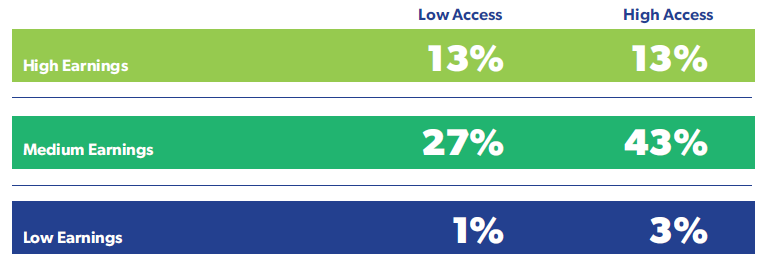
CIC Membership Survey
Every three years, CIC administers a survey to member presidents to better understand their needs and how CIC can best support them. In 2025, 13 percent of member institutions responded to the survey; they were representative of CIC’s overall membership. All responses indicated that CIC programs and services are valuable and responsive to current issues in independent higher education. In particular, respondents found professional development programs such as the Presidents Institute and the Institute for Chief Academic Officers, networks such as the Tuition Exchange Program and NetVUE, and research such as the KIT and FIT reports to be important.
In 2025, members noted the following issues to be top of mind:
- The financial model for higher education and financial health and sustainability
- The public perception of higher education
- Navigating federal policy and legislation
- Adapting to technological change

